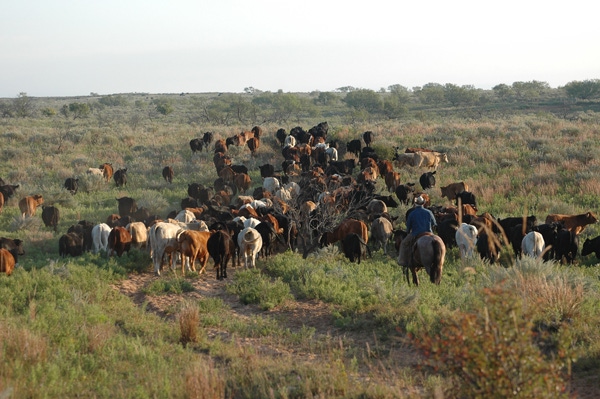2014 Will Be A Record Year For Calf Prices, And Risk
Will the pluses outweigh the minuses for cattlemen in 2014?

Cattlemen, looking ahead to what 2014 might have in store, can’t be blamed if their facial expressions vacillate between euphoria and bewilderment. Indeed, the coming year promises to blow the doors off past records for cattle prices and returns/cow. Yet, amidst the euphoria, lays an undercurrent of uncertainty that may dampen the excitement.
“I think it’s fair to say we have more uncertainty in lots of arenas than the industry is used to,” says Glynn Tonsor, Kansas State University ag economist. While some of those uncertainties have been around for a year or two, they’re still new enough that the industry has yet to adjust, he says. “I think we have very heightened, elevated levels of uncertainty. There are lots of examples on the political, regulatory and technology use fronts.”
As politics affect cattlemen, he says the uncertainties surrounding the farm bill and country-of-origin labeling have kept the industry guessing for years. “And it’s hard for me to see the end in sight on the uncertainty of those two issues,” he says.
For the country in general, he says political analysts say the level of political uncertainty is at a peacetime high. “The reason that’s important is conservative investors are less likely to pull the trigger on investments in the presence of that uncertainty.”
On the technology front, continued assaults by anti-agriculture forces using emotion to trump science make the landscape for continued advancements in production technology an uncertain thing. “If you generalize that, that uncertainty over technology use is something we need to be aware of because I think that is holding back a little of the optimism that might otherwise be the foundation for expansion of the herd.”
Closer to the ranch gate, cattlemen’s outlook for an improved feedstuff situation is picking up, “but I think it’s fair to say producers are mixed on whether they think that’s a permanent recovery or a temporary recovery,” Tonsor says.
Banner year ahead for cow-calf producers
Now, take that coin and flip it. For cow-calf producers, 2014 might go down as the banner year of all time.
Looking at data on cow-calf returns over cash costs from the Livestock Marketing Information Center (LMIC) in Denver, Tonsor says 2004 and 2013 were record years, with cow-calf producers seeing returns between $140 and $150. Those returns were higher than any other year back to 1985.
Now, take a peek at 2014 projections. “Despite how high those years are, expectations for 2014 are for returns to double those two best years,” he says.
How does $305/cow sound? Go ahead and turn cartwheels. Just try not to pull anything.
Subscribe now to Cow-Calf Weekly to get the latest industry research and information in your inbox every Friday!
Looking out to 2014, he says LMIC projects an annual average of $188 to $194 for 5- to 6-weight feeders on the Southern Plains. “If you were to do a price adjustment on lighter-weight calves, that would give you a projection for 2014 that we well may have $2 calves for an annual average, which has never happened before.”
Stocker operators are likewise looking at positive returns. “Most producers have costs of gain below value of gain; therefore, there’s some optimism among stockers as well,” he says.
The cattle feeding segment continues to struggle, despite a noticeable improvement in the market in recent months. However, Tonsor says it may not last.
“In the event we pull the trigger on expansion and we hold back heifers that would otherwise have gone through the food supply chain, that will (further) pull down feeder cattle supplies,” he says. “That’s one reason cow-calf producers are so excited, but the deeper question is just how high will these go and will feedlot operators choose to bid away some of these recent improvements in returns?”
And ultimately, he says the big question is how high retail beef prices can go. That’s because consumer demand is an issue that underlies all profitability for everyone in the industry.
So far, consumers have been very willing to keep beef on the plate. “It’s been more positive than most people expected coming out of the recession,” he says. “In aggregate, (the strength of) beef demand has surprised most analysts.”
Next year may well test consumer resolve to keep beef front and center. “(Beef demand) is going to have to continue surprising analysts throughout 2014 and 2015 in order to justify some of the prices that are expected,” Tonsor says.
You might also like:
3 Lessons From A Greenpeace Dropout
Readers Show The Love For Their Ranch Sweethearts
Share This --> Infographics Highlight Beef's Story From Gate To Plate
Simple Steps To Up Your Cow Herd's Profitability
About the Author(s)
You May Also Like


.png?width=300&auto=webp&quality=80&disable=upscale)
